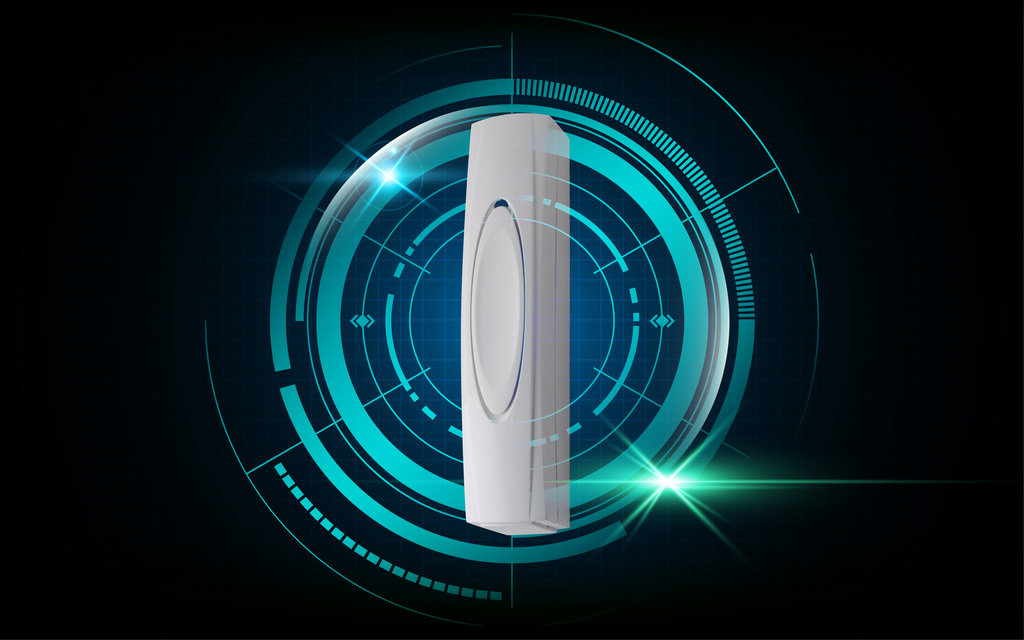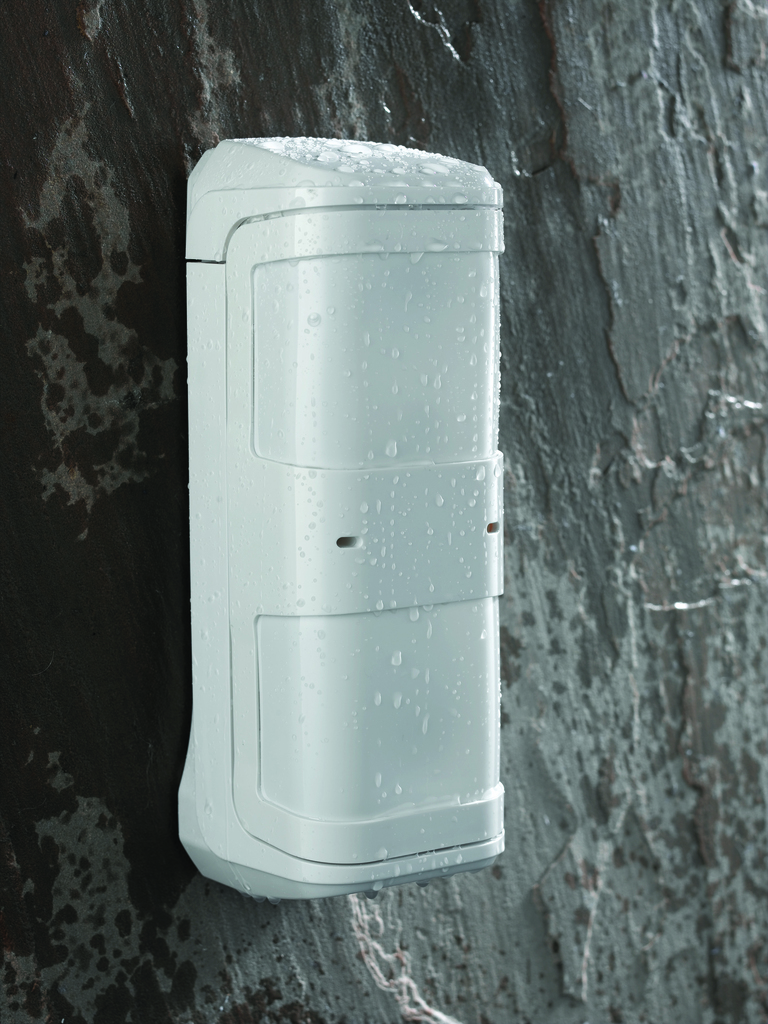
Brian Sims
Editor

Brian Sims
Editor
Damien Corbet discusses perimeter protection – what it entails and the latest technologies available
What is perimeter protection? Is it the very border of a protected space – such as a fence or gate – or is it the perimeter of a building itself – the walls, doors and windows? Actually it’s both, with the latter providing the additional peace of mind of knowing a security system will detect an intruder even before they attempt to enter the premises. It turns intruder detection into intrusion prevention.
Traditional intruder detection
Detecting intrusion in the interior of buildings has traditionally been the preferred route for the security industry, mainly because of standards and regulations. The interior is usually a controlled environment – a sterile zone when the alarm system is set. No motion is expected, and doors and windows should not open.
Traditionally, interior spaces are protected by PIR (passive infrared) detectors, dual tech space detectors, and some beam-based units and contacts. It should be remembered that, while contacts are commonly used to detect unauthorised opening of external doors and windows, in order to trigger an alarm, the intruder must open the door or window. While this does deliver an early alarm – often before they’ve gained entry to the premises – it can often result in damage being caused, which equates to a cost for the end user.
Perimeter protection
Perimeter detection devices can include external PIRs and dual technology units, beam-based devices and shock sensors. The latter can also be used for internal detection, such as on safes, secure storage areas, high risk spaces (such as doors of cash-handling areas, etc.), but when used on external doors and windows can deliver the earliest warning of an attempted intrusion.
External detection is a lot more challenging than conventional intruder systems, however. How stable and reliable will it be? How will it cope with animals or strong winds? How many false alarms will you get? These are all valid questions.
Simply adapting a conventional intruder detector for outdoor use won’t do. These systems inevitably result in too many false alarms. A perimeter detector needs to be purpose-built and fit for the job.
External motion sensors
External motion sensors generally use PIR sensors, which measure infrared (IR) light radiating from objects in their field of view. External PIRs generally include specialist lenses and in some cases two detectors or technologies. The best PIR sensors can perform in the harshest outdoor environments and are unaffected by wind, rain or pets.
External PIRS can be wired and wireless. Wireless models, such as those using Ricochet mesh technology, allow system designers complete freedom of positioning. For installers, one of the great benefits of PIRs is that they do a lot more than simply trigger alarms. They can also be used to trigger CCTV, lights and even to open gates. Added to this, by utilising home automation system, some detectors can even provide added benefits, such as letting the user know if someone is approaching the property.
Shock sensors and glass break sensors
For situations where exterior motion sensors are not required or suitable, ‘on building’ perimeter detection systems, including shock sensors and glass-break sensors, can be used.
Shock sensors enable detection prior to intruder entry, providing an ideal solution for confirmed alarm systems. There is also an option with a magnetic contact, allowing one device to offer double protection on opening doors and windows. They can detect the initial attempt to break through or force open a door or window, and are ideal for locations likely to be targeted for attack, such as ground-level doors, windows on flat roofs, skylights, etc. Most shock sensors can also include a contact detector, so it’s always best to use combined units on vulnerable doors and windows.
Glass break sensors are an alternative to shock sensors which provide an early warning of a potential intruder by detecting the sound of breaking glass. The best models can be used with plate, tempered, laminated and wired glass types.
Accelerometer technology
The very best shock sensors use accelerometer technology. This provides a much higher level of accuracy for vibration detection compared to piezoelectric technology, as found in non-conforming products. It is highly sensitive to sub-surface shock transmissions resulting from attempted forced entry, and completely immune to airborne-based high frequency noise. The result is a shock sensing technology with unparalleled catch performance while actively discriminating against false alarm sources. Unlike piezo-based shock sensors, accelerometer technology detects in all three dimensions, increasing installation flexibility as the device can be mounted in any orientation.
Despite technological innovations such as accelerometer technology, the reality is that many installers and integrators still don’t use shock sensors, because the risk of nuisance activations from innocuous vibrations or non-threatening impacts is too high. This isn’t to say that shock sensors are (or were) unreliable, but the technology used did have certain limitations. The result was many sites missing out on an important part of perimeter protection, as shock sensors were reserved for the protection of secure assets inside the building.
New shock sensor standards
In order to ensure shock sensors are accurate, reliable and effective, a new European Standard (EN50131-2-8 for vibration detectors) has been created which dictates the performance of shock detectors in graded alarm systems. It is vital that installers and integrators offering systems which require a police-first response or adherence to the standards use sensors which meet the new regulations.
EN50131-2-8 mandates stringent performance criteria across a wide range of surface materials. As building practices evolve, so the importance for sensors to work across a wide range of substrates becomes increasingly important.
Because shock sensors will be used on a wide range of materials such as glazed windows, wood, metal and concrete, it is essential the right level of sensitivity can be selected. The new standard covers this and ensures that compliant shock sensors are capable of delivering the right level of protection in a wide range of installation scenarios. It is vital installers specify appropriate shock sensors, as the use of inappropriate or non-compliant devices may lead to a system no longer being recognised as a graded solution.
Next-generation wireless systems
For reliable wireless perimeter protection in commercial applications, a combination of intelligent system design and specification of higher-grade products is required. With careful selection and consideration, next-generation wireless systems are now providing significant benefits, even in harsher environments.
The most advanced wireless systems utilise Mesh-network technology, where each individual battery-powered wireless device is capable of acting as a repeater, receiving and repeating wireless transmissions from other devices. In this scenario, the size, scalability and range of the entire wireless security system are extended, as wireless signalling is no longer restricted by point-to-point communications.
By having every single device in a system capable of retransmitting wireless communications, there are significant improvements in reliability, even when compared to using powered repeaters. The powered repeater solution will still depend on limited point-to-point communications. With mesh networking, the number of available wireless transmission routes is dependent on the number of installed devices. As more and more devices are installed, more and more signalling routes become available, exponentially increasing the number of signalling options and the integrity of the entire wireless system.
Partnerships
For installers looking for more options, most security manufacturers now work together to provide combined solutions. Examples included perimeter detection systems being linked together through specialist wireless networks. These kinds of technology sharing give installers a far wider choice to offer customers.
Conclusion
The rate of technology advancements in the security industry – particularly for perimeter protection – continues apace, with new technologies and product offerings being considered ‘game-changing’ in terms of reliability and performance. It’s time for security installers to embrace these advances and provide appropriate technology to both domestic and commercial customers. In this way the security industry will do more than simply keep itself relevant – it will continue to be an essential part of people’s lives in the years to come.
Damian Corbet works in PR and communications at Texecom. For more information, visit www.texe.com



